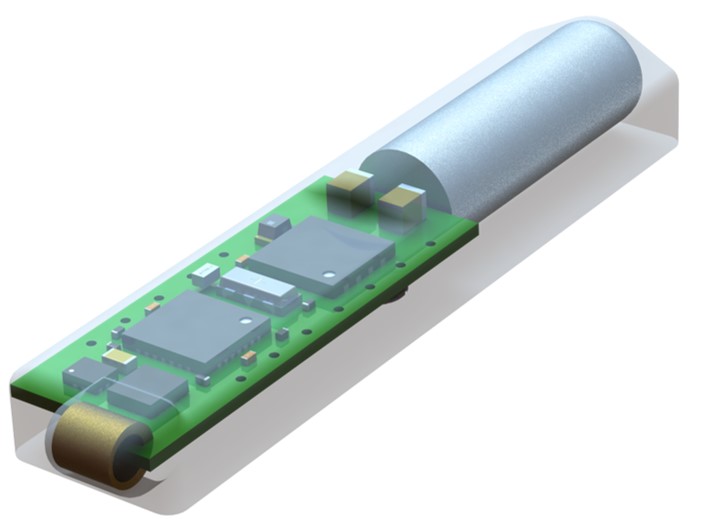Technology Overview
For decades, the hydropower industry has faced the challenge of providing efficient, renewable energy to the electric grid while ensuring safe fish passage.
Over the last two decades, acoustic telemetry tags have evaluated what fish experience as they pass through hydropower dams. However, existing tags do not provide a complete understanding of fish behavior and physiology.
Pacific Northwest National Laboratory invented Lab-on-a-Fish, the world’s first biotelemetry sensor that combines edge computing with wireless sensing of in vivo physiology (electrocardiogram, electromyogram), behavior (activity level, tail beat frequency), and ambient environment (temperature, pressure, and magnetic field). Lab-on-a-Fish simultaneously evaluates and monitors the health, behavior, and environment of fish or small aquatic species.
Its ability to store and transmit historical sensor data on both environmental parameters and bioactivity offers valuable information for studying fish behavior and response, as well as for conservation and sustainability studies. Lab-on-a-Fish is capable of transmitting raw data in real time and storing it using on-board Flash memory. The technology can provide the 3-D locations of a tagged animal, acting as an autonomous mobile sensor package that can associate sensor readings with specific locations.
SIZE AND SPECIFICATIONS
The sensor, which weighs only 2.4 g with dimensions of 5.5 mm by 6.5 mm by 33 mm, can be used for as long as eight months. Lab-on-a-Fish has demonstrated its sensing potential for biological and environmental applications in long-term validation of three species: rainbow trout, white sturgeon, and walleye.
This high-performance technology is a 16-bit microcontroller system that can be customized, upgraded, and reused. The hardware includes a thin, multi-layer printed circuit board, integrated sensors and peripherals, a piezoelectric transducer, and the PNNL-developed microbattery. Lab-on-a-Fish uses the MPLAB X IDE platform and the C and Assembly programming language.
USING LAB-ON-A-FISH
This technology is ideal for ecologists and dam owners and operators interested in improving fish passage at hydraulic structures. Lab-on-a-Fish is also a valuable tool for studying health and behavior in all freshwater and marine species.
The Lab-on-a-Fish sensor is commercially available for licensing in all fields.
Advantages
- Real-time simultaneous monitoring: Uses electrocardiogram and electromyogram, motion, temperature, and pressure
- Small, lightweight: 2.4 g, 5.5 mm x 6.5 mm x 33 mm
- One multi-functional platform: Assesses animal health, behavior, and environmental monitoring in one sensor
- In situ measurements: Remote evaluation of aquatic animals in their natural state
- Applicable to marine, estuarine, and freshwater species: Suitable for sensing and evaluating all small aquatic species
State of Development
Patent pending
